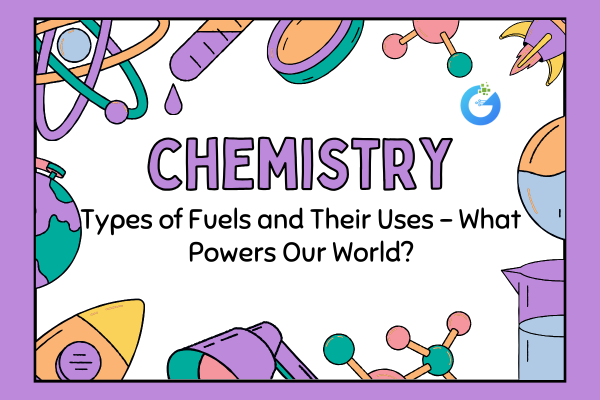Introduction – Why is Water Called a Universal Solvent?
Water is everywhere—flowing in rivers, falling as rain, and even making up a large part of our bodies. But what makes water so special in the world of chemistry is its ability to dissolve more substances than any other liquid. That’s why it’s called the universal solvent. Whether it’s salt, sugar, or gases like oxygen, water can dissolve them and carry them along. This amazing property makes life possible—from plants absorbing minerals to our bodies transporting nutrients!
expert-led Chemistry classes – visit our website to learn more
What Does “Universal Solvent” Mean?
A solvent is a liquid that can dissolve other substances, called solutes. When a solute dissolves in a solvent, it forms a solution. Water is called a universal solvent because it can dissolve a wide variety of substances—more than any other liquid. This happens due to the special structure of water molecules, which allows them to surround and break apart different solute particles.
Why Is Water’s Solvent Power So Important?
Think about how plants grow, how we digest food, or how rivers carry nutrients—all of this is possible because water dissolves things and carries them along. In our bodies, water helps carry nutrients, oxygen, and waste products to and from cells. In soil, water dissolves minerals so plants can absorb them through their roots. Without this property, life as we know it wouldn’t exist.
Substances That Dissolve in Water
Water can dissolve many types of substances because of its unique molecular structure.
For example,
- salts like sodium chloride break into sodium and chloride ions when dissolved. These ions are essential for nerve function and hydration in the body.
- Sugars dissolve quickly in water, making them an easy source of energy for our bodies, especially when carried through the blood.
- Gases such as oxygen and carbon dioxide also dissolve in water. This is why fish can breathe underwater—because oxygen is dissolved in lakes, rivers, and oceans.
- Acids and bases are another group of substances that dissolve well in water. Their presence often kickstarts important chemical reactions in living organisms and laboratories.
However, not everything mixes with water. Substances like oils and fats are non-polar, which means water molecules cannot break them apart. This is why oil floats on water and doesn’t dissolve.
How Does Water Dissolve Things?
Water molecules have a slight electric charge—they’re polar. One end is slightly positive, and the other is slightly negative. This unique structure allows water to attract the particles of many substances, pull them apart, and mix them evenly. That’s why salt or sugar disappears when stirred into water. The water molecules surround the solute particles, separating them into smaller units to form a clear, stable solution.
Core Concepts – What You Should Know
Let’s break down some key terms that help us understand why water is such a powerful solvent:
| Term | Meaning | Example |
| Solvent | A liquid that dissolves other substances | Water |
| Solute | A substance that gets dissolved | Salt, sugar |
| Solution | A mixture of solvent and solute | Saltwater, sugar water |
| Universal Solvent | A liquid that dissolves many substances | Water |
| Polarity | When a molecule has positive and negative ends | Water molecule |
Understanding these basic terms helps us explore how substances interact in nature and in our daily lives.
FAQs – Curious Questions About Water as a Solvent
Q1: Why can’t oil dissolve in water?
Oil molecules are non-polar, which means they don’t have positive or negative ends like water molecules do. Since water is polar, it can’t mix with or pull apart oil molecules. That’s why oil forms a separate layer when poured into water.
Q2: Can water dissolve metals?
Water can’t dissolve most metals directly, but it can slowly react with them, especially in the presence of oxygen. For example, iron reacts with water and oxygen to form rust, which is a kind of corrosion.
Q3: Why does salt disappear in water?
Salt is made up of ions—positively charged sodium and negatively charged chloride. When salt is added to water, the water molecules surround and separate these ions, spreading them evenly throughout the water. This makes the salt “disappear,” although it’s still there—just dissolved!
Fun Facts About Water as a Solvent
Did you know water is behind many colorful and tasty things in our life?
- Water is used to make colorful paints and inks by dissolving pigments and helping them spread on surfaces.
- The water in rivers contains dissolved oxygen that fish need to survive. Without it, aquatic life wouldn’t exist.
- Fruit juice is a tasty solution—water dissolves sugar, vitamins, and flavors to make every sip delicious.
- Rainwater picks up gases from the air as it falls, making it slightly acidic. This even helps break down rocks over time.
Conclusion – The Magic of Mixing with Water
From the moment we wake up and brush our teeth to the food we eat and the air we breathe, water is quietly doing its job as the world’s greatest solvent. Its ability to dissolve so many things helps our bodies, plants, and the planet work smoothly. That’s why understanding water as a universal solvent is one of the most important lessons in chemistry—and life!








